Atlantic Avenue runs from the Brooklyn waterfront at the East River to the Van Wyck Expressway in Jamaica, Queens; along the way it separates several neighborhoods and comprises many architectural styles. As downtown Brooklyn remakes itself, the FNY camera caught it on the cusp of what could be major change along its westernmost three miles. Perhaps Atlantic Avenue may not look quite like this ever again…
There are seemingly two Atlantic Avenues. There’s the one west of Flatbush Avenue, with its small restaurants, antique shops, and Middle Eastern enclave. There’s also the one east of Flatbush, with its humongous retail stores, railyards, and further east, auto parts and restaurant supplies retailers. The element that ties each together is the presence of roaring traffic, and motorists use its relatively large width and synchronized traffic lights to get to the Brooklyn-Queens Expressway, which marks its western end. Your webmaster recently walked Atlantic’s western few miles on the first hot day in May. I had scoured chez webmaster for my copy of the Atlantic Avenue Betterment Association‘s walking guide, but as so often happens when I really need anything, it was nowhere to be found. So, I downloaded the PDF version and jotted down the locales I wanted to check out, walked and snapped, and here’s the webpage.
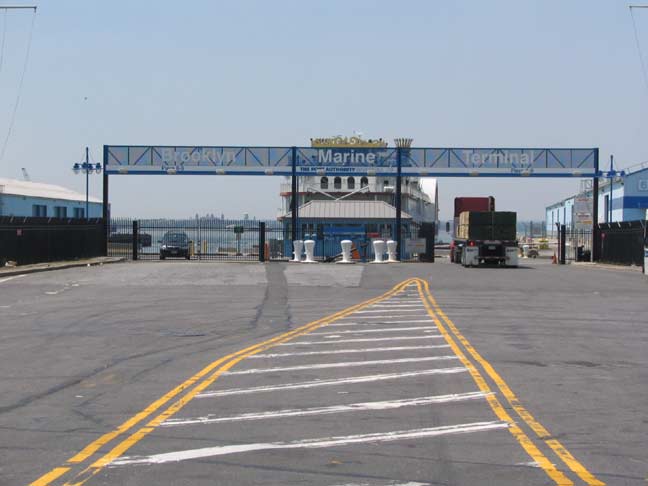
The western end of Atlantic Avenue empties into the Port Authority’s Brooklyn Marine Terminal, one of its three cargo terminals in the city along with the Red Hook Container Terminal in Brooklyn and Staten Island’s Howland Hook Terminal. From 1836-1933, this was the site of a passenger ferry to Whitehall Street and South Ferry in Manhattan. For a brief period, 1844 to 1859, the Long Island Rail Road delivered passengers here via a tunnel under the avenue — which is still in place.
In 2011, Brooklyn Bridge Park was extended south along Furman Street to Atlantic.
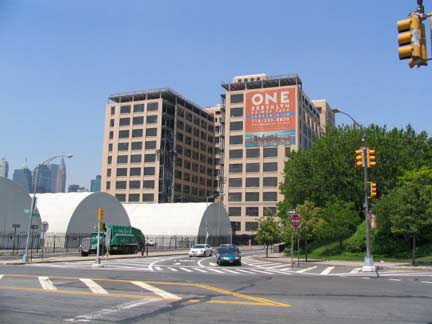
Furman Street runs along the Brooklyn waterfront from Atlantic Avenue to Old Fulton Street. It once lay at the bottom of a steep hill; the presence of the Brooklyn-Queens Expressway, which has run on top of it since the 1950s, somewhat camouflages the hill. Once the province of waterfront industry, including a pocket railroad, Furman Street may become the site of a renaissance as new residences and perhaps an extended Brooklyn Bridge Park are set to be built along its western edge [as it was]. In the hopefully named One Brooklyn Bridge Park, above, some folks will have a great view of Manhattan, but some, it seems, better get ready to gulp car exhaust.
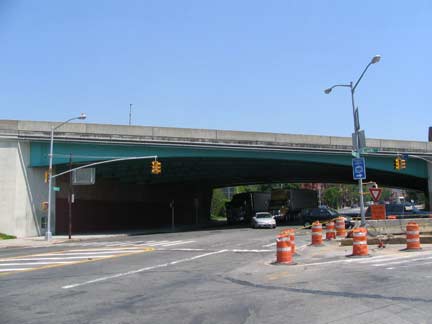
The BQE curves here to hug the waterfront, and it does so because Brooklyn Heights residents were successful in persuading “master builder” Robert Moses to detour the expressway and not cut through most of the Heights’ historic houses and quiet streets. As is, the BQE was cut through in 1954. Residents of the Bronx’ Castle Hill and Unionport neighborhoods, and Brooklyn’s Cobble Hill weren’t so lucky, however, as those locales could not stop the Moses juggernaut in the Fab Fifties.

What was 55 Atlantic Avenue is presently the northbound entrance to the BQE. In 1883 Irish immigrant Benjamin Moore opened a paint factory here. A few years later, the company moved to Newark, NJ and is presently based in Montvale, NJ.
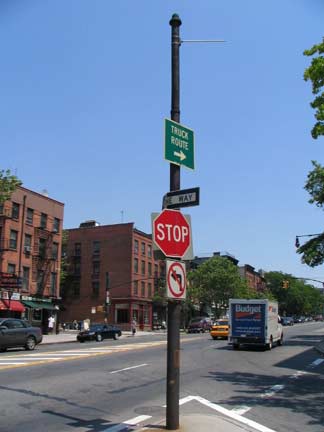
Until February 20, 1949, the B32 trolley line ran along 5th and Atlantic Avenues to its terminus at the East River. Pretty much the only remnant left is this lone trolley wire pole at the BQE entrance and Atlantic Avenue, which is handy dandy to hang traffic signs on.
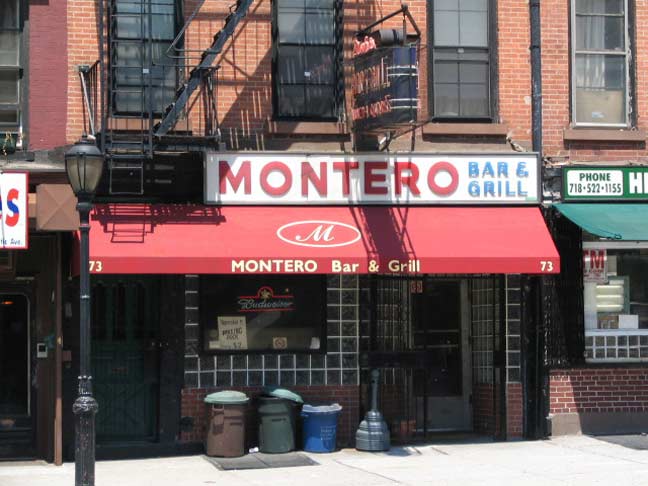
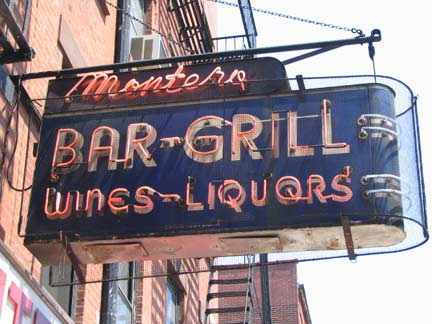
Montero Bar and Grill, 73 Atlantic, has been part of the Atlantic Avenue scene since 1940. It relocated to 73 Atlantic from 56 in 1947 after the BQE condemned its first locale.
Every single inch of Montero Bar and Grill is crowded with stuff, mostly gifts that sailors and seamen brought the original owner, Joseph Montero, since he opened here in 1947. Some of it dates from even earlier, when his bar was across the street. Thirty-four ship models, dozens of shipping prints and a veritable family album of the Montero family’s lives are just a sample of the items hanging from the walls and packing the alcoves. But this is not a museum: it is a living, breathing bar. It has remained raffish and even a little intimidating as the neighborhood around it has grown wealthy and precious. Wendell Jamieson, “A Raffish Reminder, Landlubbers, of Saltier Days,” NYTimes, May 9, 2003
Co-founder Pilar Montero died in 2012.
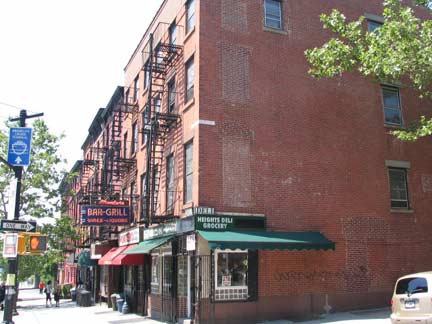
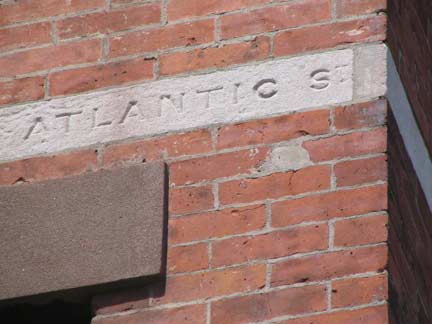
A bit of past nomenclature can be seen at the NW corner building, 75 Atlantic, at Hicks Street near Montero’s: Atlantic Avenue was Atlantic Street. In the 1700s, the avenue was a path to Ralph Patchen’s farm at the East River waterfront (Ralph and Patchen are now Bedford-Stuyvesant avenues); by 1816 it had become District Street; by 1855, Atlantic Street. In a year either side of 1870, it had become Atlantic Avenue–by then Long Island Rail Road tracks extended east to Jamaica and the right-of-way assumed its name. So, this building is quite old; it goes back to at least 1870.
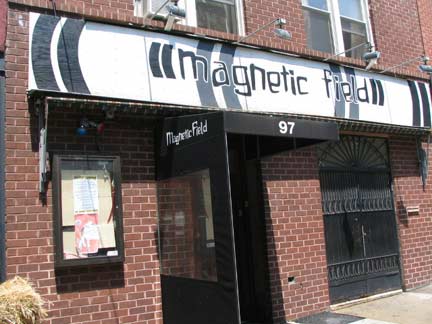
“Rock & roll cocktail lounge” Magnetic Field at 97 brought live music to Atlantic Avenue in the early 2000s.

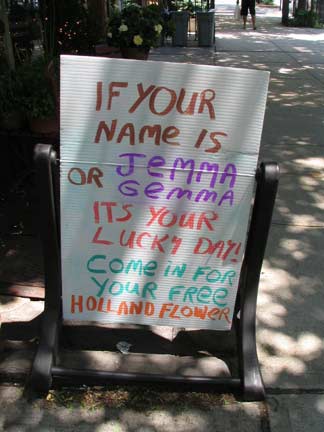
Floral Heights had an offer. Your webmaster, whose name is Kevin Jude, was out of luck.
The Dead Know Brooklyn
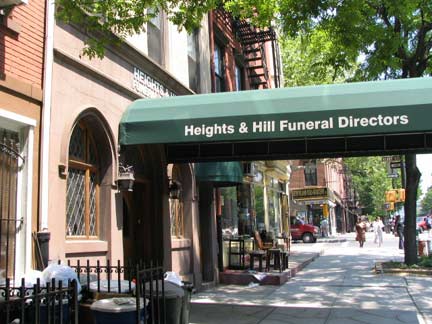
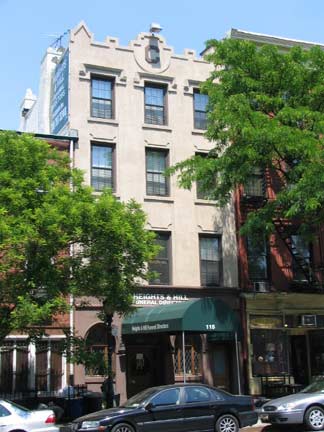
Florists and funeral homes are never far apart. Cronin, now Heights and Hill, was instituted by Irish immigrant Jere Cronin in 1896 at 103 and later moved to 115. The Cronin legacy is marked by the big C at the roofline.
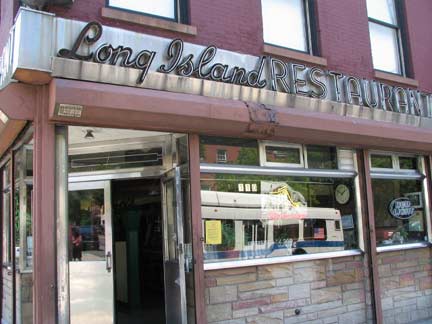
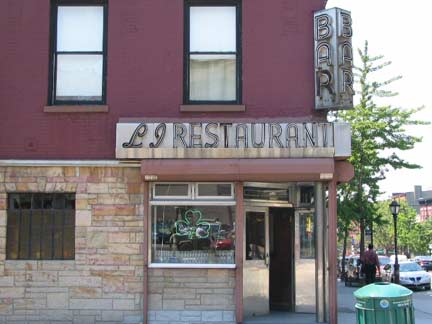
Few Brooklynites prefer to admit it but Brooklyn is indeed the western end of Long Island. Long Island University still acknowledges this, but the Long Island Historical Society long ago became the Brooklyn Historical Society. And then there’s the Long Island Restaurant, 110 Atlantic, at the SE corner of Atlantic Avenue and Henry Street.
Emma Sullivan says the food in the Long Island Restaurant is exactly as it was when her father, Ramon Montero, opened up in 1951 — hamburgers (onions raw or fried), meatloaf, chicken soup, fresh-cut French fries — and eating it, you believe her. Why bother changing the recipes when everything tastes so good? The Art Deco bar back has been so well cared for that it looks brand-new, the wood and the two lighted columns in the middle polished so religiously that they shine. Wendell Jamieson, “The Quarrel,” NY Times, March 6, 2006
The two in-law matriarchs of Montero’s and the Long Island Restaurant have feuded for years, as the above article explains. It’s unfortunate. The restaurant closed in late 2007 after a death in the family.
Joel Tompkins and Toby Cecchini restored and re-opened the bar in 2013. Cecchini owned the Manhattan bar Passerby. He is also the author of Cosmopolitan: A Bartender’s Life and a columnist for The New York Times’ T Magazine. Tompkins co-founded the underground restaurant Coach Peaches.
Smith Street’s reinvigoration as a restaurant and bistro mecca has radiated to surrounding environs, including Atlantic Avenue, which has seen its share of eclectic joints spring up in the last few years (as of 2007).
Atlantic Chip Shop, 129 Atlantic: A small bar counter adjacent to the bar seats a handful, and to the rear, a dozen+ roundie and square tables done with small glass candles to ‘em, and sharing common benches on the walls; one of red brick and the other in pressed tin, same as the ceiling. Drop cone glass lamps over the bar & bullet lamps throughout. British car signage adorns the walls, as do framed pics of the Beatles & John Lennon, a Quadrophenia movie poster, a London underground print, Who, Clash & Beatles posters, London Bridge pics, etc. A lip over the rear rear nook of the place holds plates, trays and tea set pieces. 16 taps on a single tower on the bar…Traditional English fare. [Beer Advocate]
Floyd NY, next door at 131, immediately drew attention when it opened in 2004, due largely to its indoor bocce court. Besides teaching people to bowl again, Floyd NY provides a comfortable wide-open space to relax. One bartender describes the space as “Rustic; raw but stylish.” He attributes a lot of the appeal to the size of the space, formerly two storefronts. Despite all its space, the bar is often full. Usually bustling, the crowds vary from night to night. The 8 tap beers are good, if common selections. [Brooklyn Record]
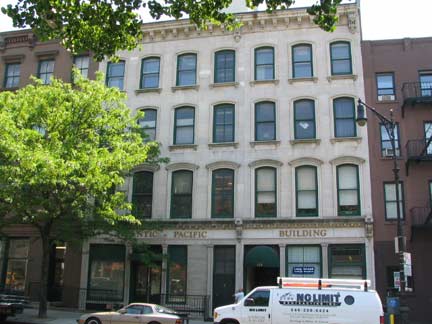
124-128 Atlantic, above, was formerly the Atlantic-Pacific Chandlery Manufacturing Company (a chandler stocks ships for ocean voyages). The old name is perserved as the Atlantic-Pacific Building.
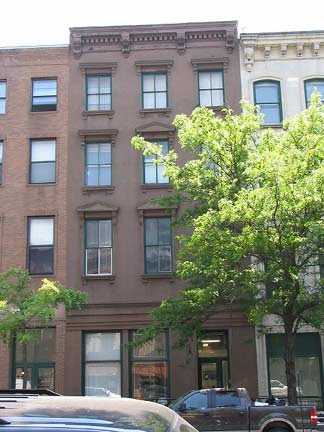
130 Atlantic, right, was formerly home to Citizens’ Gas, which, after some mergers and several renamings, became KeySpan and then National Grid.
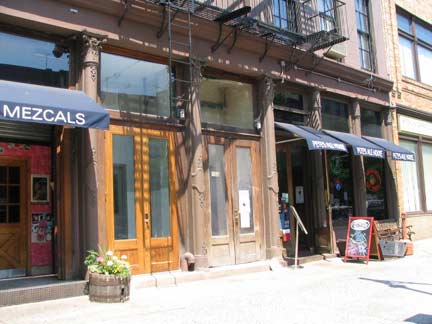
Pete’s Waterfront Ale House, 155 Atlantic, was formerly the Congregation Baith Israel Anshei Emes, but the synagogue hasn’t been here since 1862. It is presently located a few blocks away on Kane Street.
They have a great selection of beers, both bottled and draft, and they rotate the selections often enough so that you can always find something new and interesting to try, everything from Ebulum Elderberry Black Ale from Scotland (the last time I was there) to local favorites from Brooklyn Brewery. If you aren’t sure what you want just ask one of the bartenders. They tend to be pretty knowledgeable about the offerings. [1000 Bars]
The slogan “warm beer, lousy food” seems to have been lifted from the old Crazy Country Club, though.

The impressive SE corner building at Clinton Street, 160 Atlantic Avenue. Note that the window styles are different on each of the building’s top four floors.
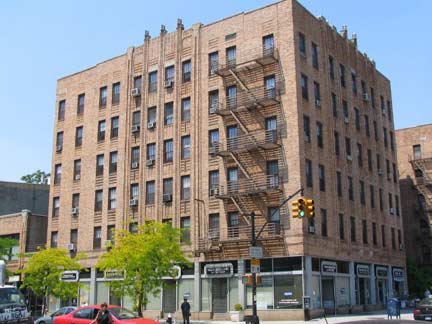
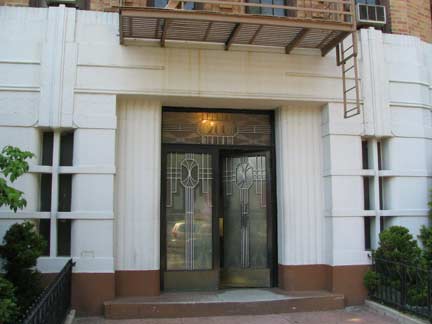
Atlantic Avenue can boast a couple of Deco palaces, including 200 Clinton Street. It was built in 1926 and closely resembles the building it replaced, The Fougera, named for its Victorian-era builder, Edmond Fougera.
The Ghostly Gentleman
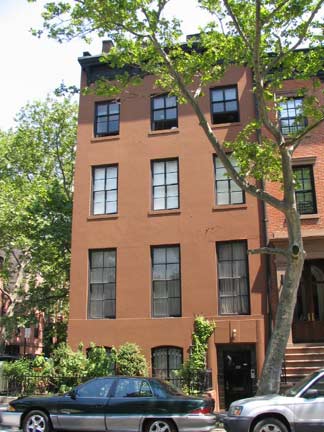
Your webmaster took a brief detour, or rather a pilgrimage, to 169 Clinton, at State Street a block north of Atlantic Avenue. Here on the first floor for most of 1925 lived master macabre fictionist H.P. Lovecraft (1890-1937). Closely associated with Providence, RI, his home for most of his life, Lovecraft moved to a one-floor apartment here in what was then a depressed part of Brooklyn after his wife, Sonia, moved to Cincinnati, OH to find work in a department store. Lovecraft was unhappy in Brooklyn, and moved back to Providence in 1926 as his marriage foundered.
In his 1996 biography H.P. Lovecraft: A Life, S. T. Joshi relates:
…Lovecraft found disappointing, at least initially … the seediness of the general area; but he knew that beggars could not be choosers. …
…The room at 169 Clinton Street really was rather seedy –in a run down neighborhood, with a dubious clientele, and infested with mice. For this last problem Lovecraft purchased 5¢ mousetraps “since I could throw them away without removing the corpus delecti, a thing I should hate to do with a costlier bit of mechanism.”
Most of his suits were robbed during his stay, the only thing he had in the apartment beside his books worth stealing. His stories “He” and “The Horror At Red Hook”, neither of which present NYC in a favorable light, were written during this period.
My coming to New York had been a mistake; for whereas I had looked for poignant wonder and inspiration in the teeming labyrinths of ancient streets that twist endlessly from forgotten courts and squares and waterfronts to courts and squares and waterfronts equally forgotten, and in the Cyclopean modern towers and pinnacles that rise blackly Babylonian under waning moons, I had found instead only a sense of horror and oppression which threatened to master, paralyze, and annihilate me. –Lovecraft, from “He”
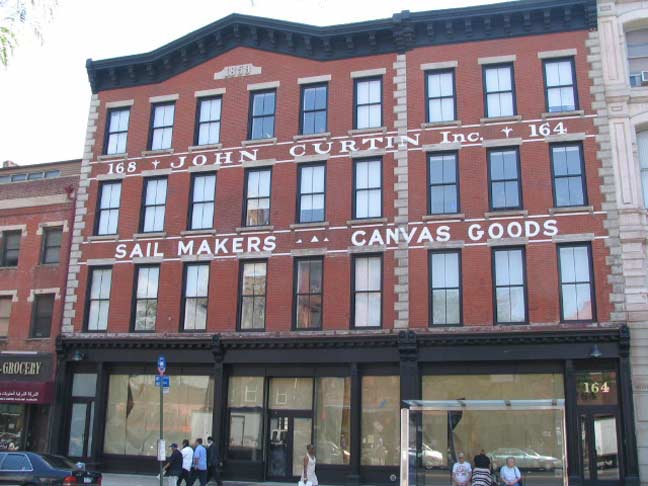
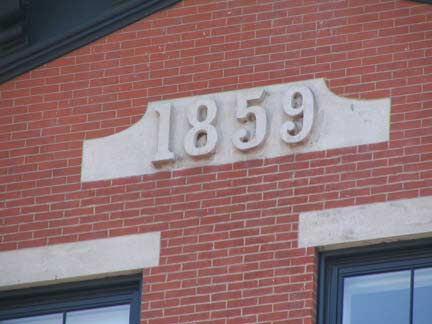
164-168 Atlantic Avenue, built between 1860 and 1868 (NOT 1859 as the chiseled sign says), is described thusly in the AIA Guide to New York City:
Merchant princes of the 19th Century were more concerned with the quality of their architecture than those of the 20th…Note the stone quoins and bracketed roof cornices.
The painted sign, by the way, is not an 1860 original:
In the mid-to-late 1800s, when New York’s ports were the world’s busiest, a number shipbuilders, sail makers and other nautical tradesman in Manhattan and Brooklyn thrived. There is physical evidence of the nautical trade at 164-168 Atlantic Avenue in Brooklyn, where Two Trees Realty restored the facade of an old sail loft, while converting it to luxury apartments. While those days are long gone, it doesn’t mean that you still can’t find a skilled pro who knows how to craft a sail in New York City. [Sail Brooklyn]
East to Atlantic
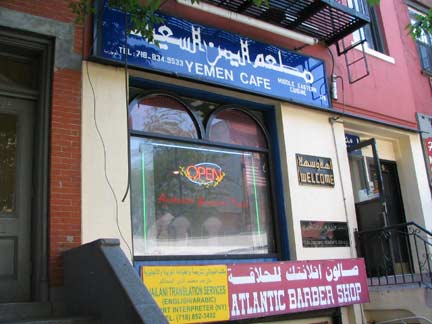
Yemen Café, 176 Atlantic, along with Sahadi’s (see below) is one of the linchpins of Atlantic Avenue’s Middle Eastern community. 176 was an early photo studio in the 1860s.
Some of the shops on Atlantic Avenue have been selling Middle Eastern goods for 100 years, ever since large numbers of “Syrians” – many of whom came from what is today Lebanon, Iraq or Jordan – first started arriving in the United States. By the turn of the century, about 100 Arab families were clustered near the end of the avenue by the waterfront, a satellite of the main “Little Syria” on Washington Street in lower Manhattan. They enjoyed a rich cultural life that was in many ways like the one in the old country, with Arabic newspapers, coffee houses and festivals where they danced the old dances. In those days, some of the young men journeyed back home to fetch brides.
For many of the children and grandchildren of the immigrants living on or near Atlantic Avenue, its shops and restaurants were their only tangible link to the old country. Helen Uniss Khouri, for instance, was born in Brooklyn into a distinguished family from Abeye on the eve of World War I; she did not travel to Lebanon until the late 1940’s, and her sister Katherine Uniss Haddad never did get to go. As children, all of their images of the homeland were filtered through the memories of their elders or reflected in the transplanted life of the avenue. [Saudi Aramco World]
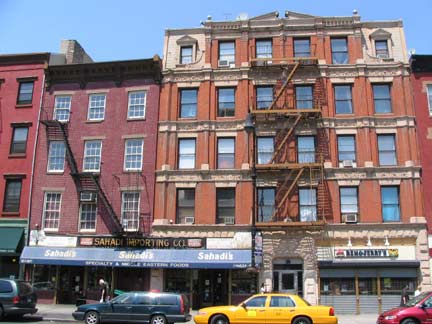
Sahadi’s, 187-189, is the largest and most famous Middle Eastern food store on Atlantic Avenue, opening here in 1948. The business was instituted in 1895 by Abraham Sahadi on Washington Street in lower Manhattan. Unusually it occupies the ground floor of two separate buildings.
Sahadi: After you get through the ridiculous room of bulk spices, nuts, and coffee that makes you feel like you’re in Morocco, you reach the unbelievable deli, where everything is oily and beautiful and cheap. As we waited in the seemingly interminable line, little women kept coming out of the back bearing steaming trays of gorgeous food. We feasted on several of these phyllo-wrapped tidbits (mushroom and eggplant …and spanakopita… we also had a wonderful tomato and feta version, as well as one with potato and herbs). Each item cost slightly more than a dollar, and we were stuffed and happy after sitting on a Brooklyn Heights stoop and eating every shred of dough and filling. [Eat]

The intersection of Atlantic Avenue and Court Street isn’t unusual, except that a manhole (seen faintly below the rear tire of the black car) is the only known entrance to the 1840s LIRR tunnel under the avenue.
Latterly a branch of Independence Bank, this Classical bank building, 130 Court at Atlantic, was constructed in 1922 by McKenzie, Voorhees and Gmelin as a branch of the South Brooklyn Savings Institution.
Cobble Hill and Red Hook have been known as South Brooklyn for the better part of two centuries, since at one time they were indeed the southern reaches of the City of Brooklyn. As the 19th Century rolled on Brooklyn annexed towns to its south and east, until it was co-terminous with Kings County. Brooklyn enjoyed this exalted status for only a few years until it too was annexed in 1898 by a bigger city to its west…New York City.
John DeCesare produced the bronze plaque that commemorates what is thought to be the redoubt where George Washington observed the Battle of Brooklyn in August 1776, a battle that the patriots lost. It amounted to a glorious retreat when 400 Maryland troops interrupted the British before they could finish off Lord Stirling’s troops. Most of the Marylanders paid with their lives, but the patriots lived to fight another day.
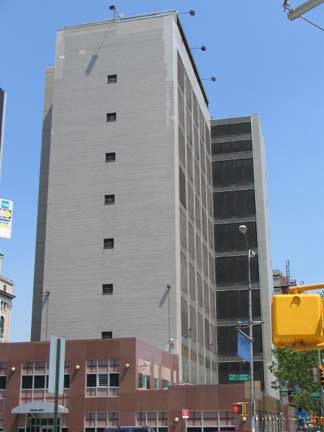
The Brooklyn House of Detention at Atlantic Avenue and Boerum Place was constructed in 1957 (as was your webmaster), replacing Miller’s Furniture Store. It has been unoccupied in recent years but the City is always trying to reopen it, to the neighborhood’s consternation.
The Boerum family arrived from Holland in the 1600s and produced prominent landholders and politicians in the colonial era. At Atlantic Avenue, Boerum switches from a narrow lane to an 8-lane behemoth also called Brooklyn Bridge Boulevard.
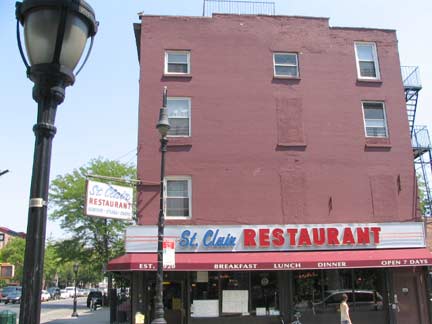
St. Clair Restaurant, at 93 Smith Street, has been here since 1920 according to a sign on its awning. That means it preceded Smith Street’s restaurant redux by a good 75 years.
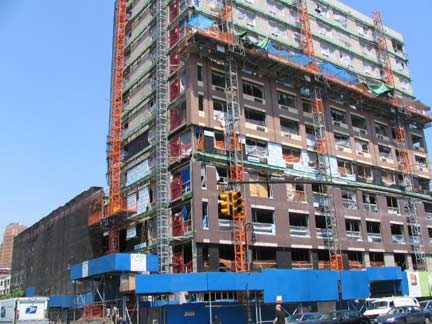
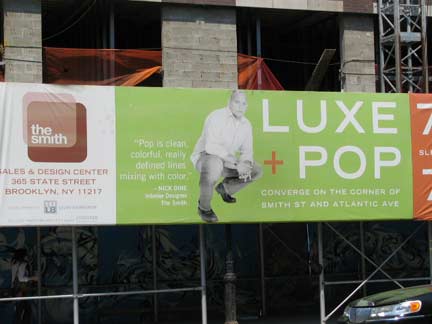
The Smith, a 12-story luxury condo building/boutique hotel, arises at 75 Smith on the NE corner of Atlantic. Its 12 stories make it about eight taller than the biggest of the surrounding buildings. If you have ever wondered what its architect, Nick Dine, looks like, there he is. On the Smith Street side, you would have a great view of the prison.
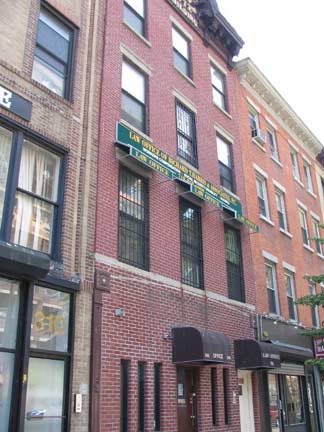
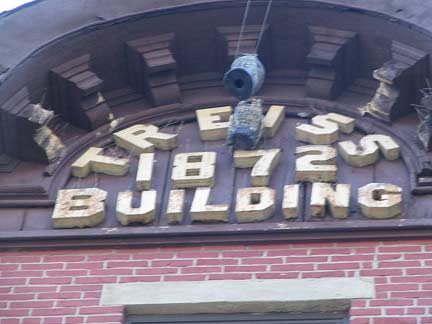
George Treiss Jewelry, 308 Atlantic, now law offices. How have those wood block letters survived over 135 years?
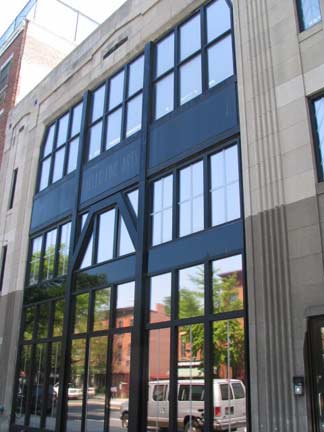
The fine glass-faced Art Deco building at 320 Atlantic Avenue was a National Cash Register office from 1930-47.
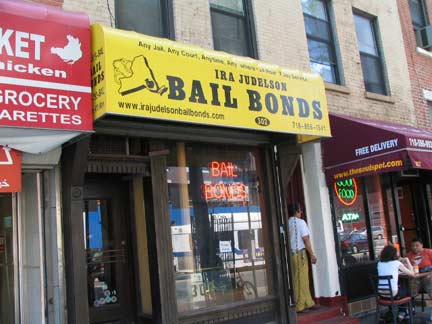
Some of Atlantic Avenue’s gritty reality will be obvious to residents of The Smith if they face the Atlantic Avenue side, where there are a string of bail bonds offices serving the Brooklyn House of Detention.

A bit of old-skool Atlantic at 307-309, home of Academy Rubber Stamp. It’s a shame that businesses whose products — like the stamps, notary materials, business cards, etc. made by Academy — manufactured and sold in NYC seem to be disappearing in favor of Starbucks and banks, banks, banks.

A typical Brooklyn scene, at Atlantic Avenue and Hoyt Street, now includes construction cranes.

Atlantic Avenue flips again at Hoyt; for the next two blocks, many of the businesses have been, for the better part of 3 decades, antique retailers and restorers. Other furnishing stores are here too, carpet stores and reupholsterers.
Note the “Florence” inscription at the top of the building at right.
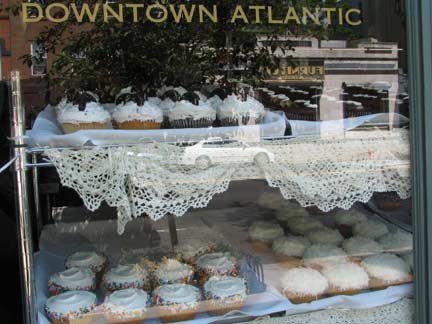
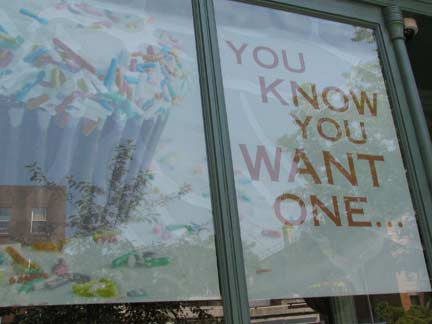
Downtown Atlantic, 364. I know I want one but my doctor doesn’t want me to have one, and most of the women I know don’t want me to have one.
It looks like a synagogue but Talmud Torah Beth Jacob Joseph, a school at 368, moved out long ago and the 1917 space is now Time Trader Antiques.
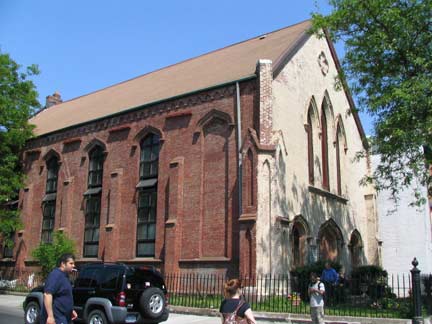
It looks older than it is, but the Belorussian Autocephalic Orthodox Church, at 401 Atlantic and Bond Street has been here “only” since 1902. St. Peter’s Episcopal Church erected a building here in 1850, and subsequently sold it to the Second United Presbyterian Church in 1863, who constructed this Gothic church in 1902.
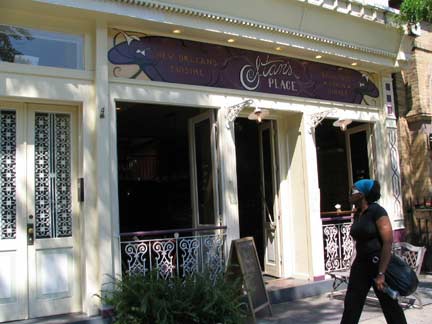
Stan’s Place at 411 promises authentic New Orleans and Cajun fare. The exterior, at least, is New Orleans-style.
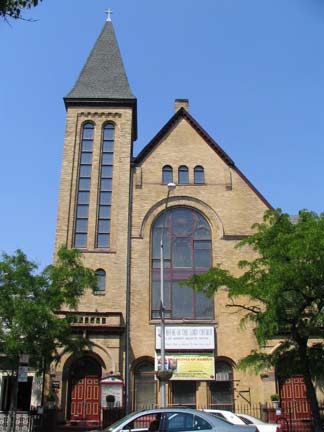
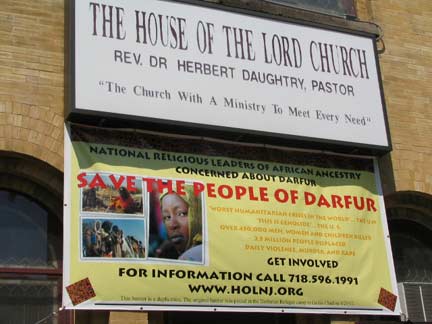
House of the Lord Church, 415 Atlantic. Pastor Herbert Daughtry has been involved in a myriad of causes over the years, such as the slaughter in Darfur, Sudan. This was originally the Swedish Pilgrims’ Evangelical Church built in 1903.
Relieved
Ex-Lax, the “chocolated laxative” was founded in 1908 by Lithuanian immigrant Israel Matz. The constipation relief medicine was, in 2007, produced by Novartis.
Its 1925 Atlantic Avenue factory, 423-443, was converted to 57 co-operative apartments in 1981, making it somewhat of an Atlantic Avenue pioneer.
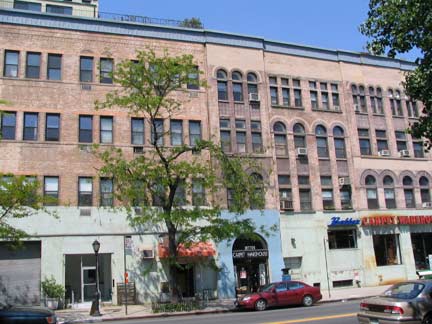
Part of the Ex-Lax complex since 1925, 435-443 Atlantic was the August Busch Bottling Company from 1893-1903. Budweiser, introduced in 1876, was bottled here.
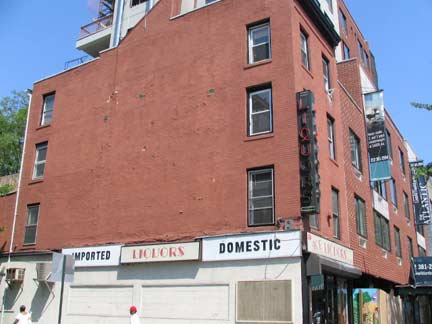
It’s been a blank brick wall for a few years now, but this building at Atlantic and Nevins Street was for a couple of decades, the canvas of satirical wall dog Jerry Johnson..
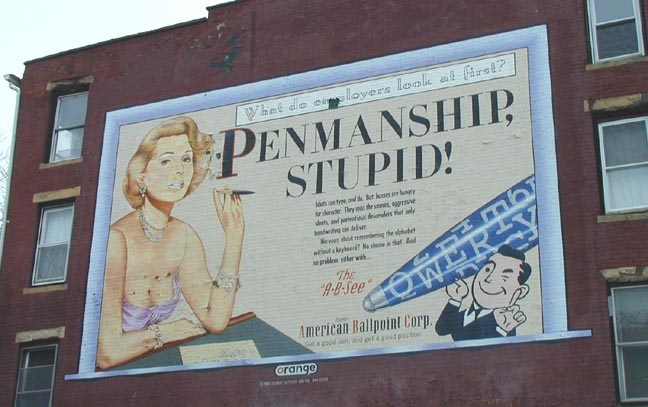
Jerry Johnson’s last poster.
Jerry Johnson has been painting ironic murals on a building at the corner of Atlantic Avenue and Nevins Street in the Boerum Bill section of Brooklyn since 1982. His first depicted a 1940’s trio in snazzy attire lounging beside a shiny car, accompanied by the admonishment “Dress right . . . and get a better shake out of life.” Smaller lettering informed the viewer that the message was “Courtesy of the President’s Council on Appearances.”
Completed during Ronald Reagan’s first term in office, it juggled ideas about dressing for success and right-wing politics. “Cash,” a 1987 work in which a glassy-eyed woman is shown dreaming of dollar signs and consumer goods, poked fun at the plummeting status of bills and coins in an age of plastic money. In “Plates,” from 1985, a chef proffers an egg on a plate. lt is a simple gesture that manages to be political, making points about synthetic food and polystyrene containers.
“I started doing these billboards because l had something to say, other than what l said from 9 to 5,” the artist explains. “I thought, `why not use the existing medium and language in its most classic format to address some of the things going on today?’ Billboards are honest. I have real problems with the art world, where someone can paint a painting that makes a condemnatory statement about capitalism and sell it for $80,000. The artist gets rich and the patron sits on the painting until it appreciates, then dumps it. It’s so hypocritical, it’s ludicrous.” Mark Dery, “The Merry Pranksters And the Art of the Hoax”
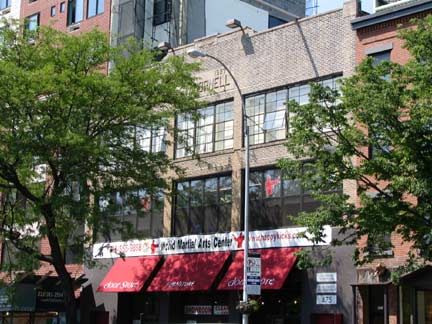
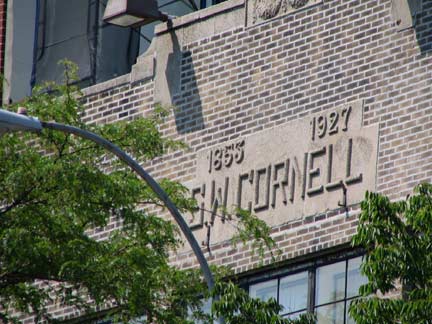
S.W. Cornell opned a hardware store at 121-125 Court Street in 1853 and purchased a new 3-story building at 475 Atlantic in 1927. In signs like this the first year refers to the founding of the company, and the second number is the year the current building was built. For many years 475 Atlantic was home to the Kalfaian Carpet Warehouse; it’s presently a kids’ martial arts center.
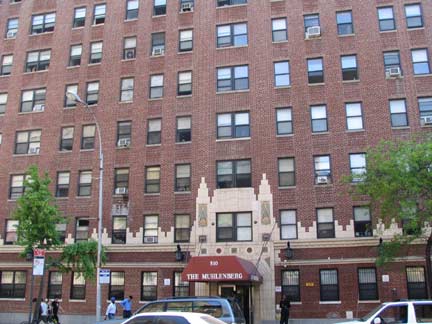

The Muhlenberg Residence, located at 510-514 Atlantic Avenue is a 201-unit dwelling for low income, homeless, housing needy, and community people. Lutheran Social Services, an experienced social service provider and housing manager, rehabilitated the building with assistance from HPD’s Supportive Housing Loan Program. NYC.gov
The Muhlenberg for most of its life was the Times Plaza Hotel, named, like Times Plaza itself at Atlantic and Flatbush Avenues for a former Brooklyn newspaper. Its 1930s Art Deco touches are still apparent.
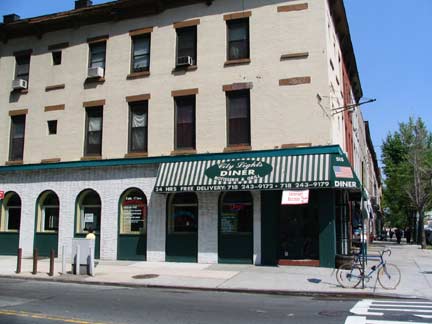
City Lights Diner, formerly Steve’s Restaurant, SE corner of Atlantic and 3rd Avenues.
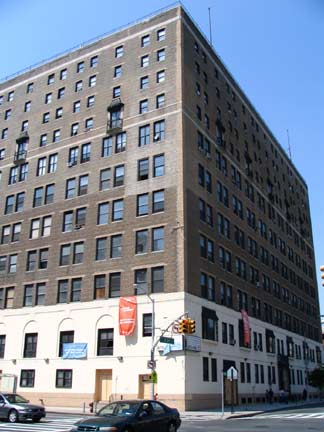
The Young Women’s Christian Association built this edifice at 3rd and Atlantic in 1927. Boys were invited in for socials, etc. beginning in 1943.
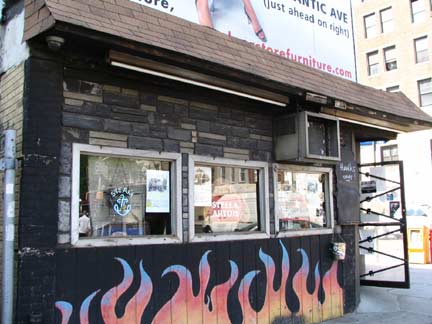
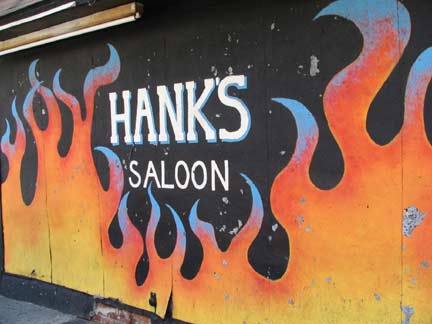
Hank’s Saloon, 46 3rd Avenue at Atlantic — By day, it’s a rough-looking, rundown, flame-painted biker bar with a craggy cast of regulars that could scare Bukowski straight. But by night… well, actually, it’s about the same, but with more people, and live music. Every Sunday (Sunday! Sunday!) night, house band Sean Kershaw and the New Jack Ramblers belch out upbeat country classics to a backdrop of free hamburgers, dancin’ cuties, and random insanity, while the Lovely and Talented Daria dishes out $2 beer to Brooklyn’s most nefarious assortment of country-lovin’ drunks. Don’t let the honky sounds fool you—this place attracts all kinds: white, black, old, young, punk, bluegrass, crazy and crazier.
One recent Sunday night at Hank’s, I saw pair of local b-boys get down on the floor and breakdance to an old-time honky-tonk jam while nubile hipster girls guzzled cans of Pabst through a beer bong. It don’t get any more mixed-up—or better—than this, folks. After Sunday, you’re on your own, as, depending on the time and night, the place is either hopping with live rock bands or takes on a decidedly Tourette Syndrome vibe. [Brooklyn Country]
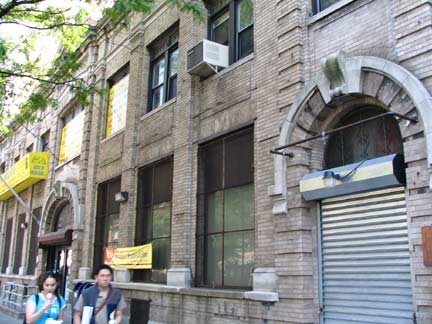

The Times Plaza Station, US Post Office, was built in 1925. The upper floors used to house Local 361 of the Ironworkers Union, many of whose members were Mohawk Indians living nearby.
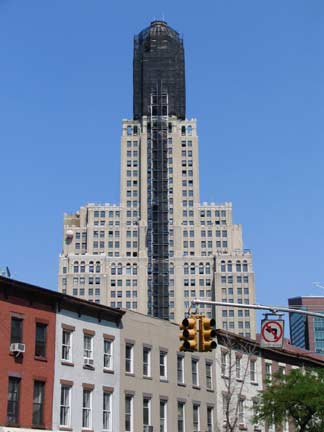
It’s been said that the Williamsburg Bank Building is the most priapic in NYC. Your webmaster won’t go the obvious route with this picture…I’ll just say it looks like it’s giving us the finger. Formerly the House of Pain, its dentists and oral surgeons have mostly moved out to make way for mucho $$$ condos.
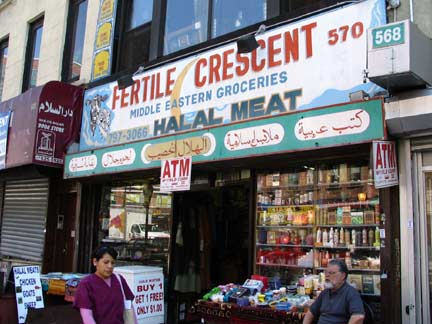
552-554 Atlantic, the Masjid Al-Farooq mosque and Al-Aqusa Islamic School, has been likened to a “glazed candy cane.” This section of Atlantic is intensely Arabic.
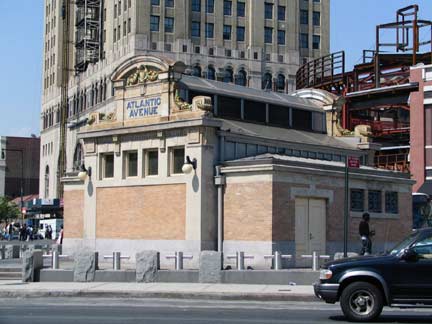
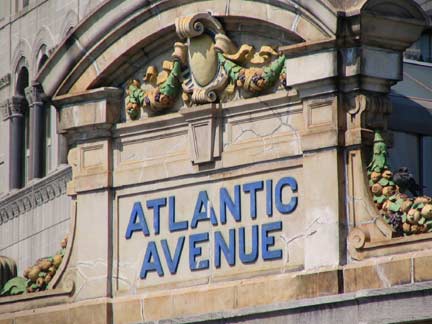
Early subway architects Heins and LaFarge built this subway headhouse, rather similar to others built along the IRT line in Manhattan in the first decade of the 1900s. The IRT was extended to Brooklyn in 1908 with Atlantic Avenue the original terminus. Unfortunately the subway headhouse was placed in a rather unfortunate position: the triangle formed by Atlantic, Flatbush and 4th Avenues. At first, accessibility wasn’t an issue in that the motorcar was in its infancy and it wasn’t all that dangerous for pedestrians to cross these three busy avenues, but things got downright hairy as time went on. The building itself suffered all manner of indignities, including being overshadowed by garish 1970s signage (it had earlier been shrouded by the Fifth Avenue El) until finally, early in the 200s, it was removed and restored as part of an overall subway complex restoration.
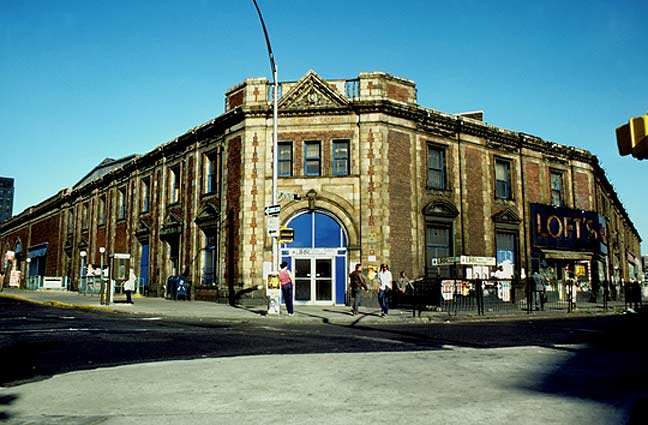
Long Island Rail Road terminal, 1978

Atlantic Terminal, 2007
Technically this is the corner of Flatbush Avenue and Hanson Place, but the new building also faces Atlantic Avenue. On the left is the 1907 terminal building of the Brooklyn branch of the Long Island Rail Road. Of course, we’ve seen that the railroad used to extend to the East River, but by 1907 the railroad had given up any hope of maintaining those operations and ran steam trains on Atlantic Avenue out to Jamaica and points east on Long Island.
A new ticket office opened in 2004, and at long last, in 2007 a new LIRR entrance at Flatbush and Hanson is being constructed.
The LIRR terminal was razed in the early 1980s, and, due to economic vagaries as well as political and community wrangling, remained a hole in the ground for over 20 years. At length, Bruce Ratner’s Forest City Enterprises (the same organization attempting to build the nearby controversial Atlantic Yards megacomplex, which includes an NBA basketball arena) constructed Atlantic Terminal, a mall anchored by Target, atop the tracks on the site. AT opened in 2004.
Atlantic Avenue widens considerably after crossing Flatbush Avenue, since Long Island Rail Road tracks once went down the middle of the street. In the 1840s steam trains plied the route, were replaced by horse-drawn cars for awhile, and later, steam gradually replaced the horses. By 1940 the tracks had been placed in a tunnel under the street except for a stretch in a valley between Nostrand and Howard Avenues, which was placed on elevated tracks. This section of Atlantic Avenue received its last major overhaul in 1971.
Until 2006, The Underberg Building stood at Atlantic and Fifth Avenues. Samuel Underberg is a food supplies company presently located further down Atlantic Avenue at Utica. “Underberg” had been immortalized as the title of the opening section of Jonathan Lethem’s novel “The Fortress of Solitude,” much of which is set on nearby Dean Street.
[This spot was utterly transformed by 2010-2012 with construction of the new Barclays Arena, which now dominates this space.]
Slaughtered
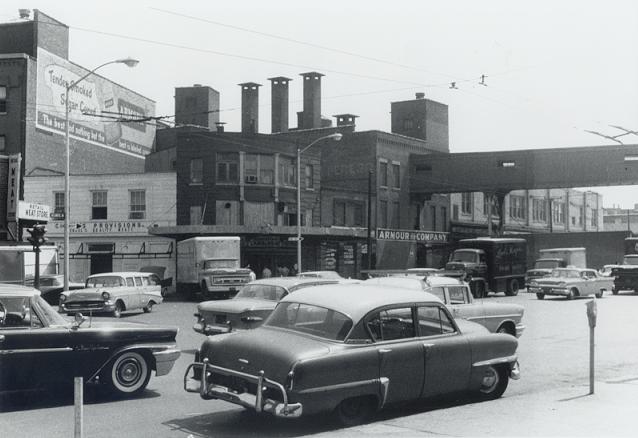
Atlantic Avenue meatpacking district, Atlantic Avenue and Ft. Greene Place, 1962

Atlantic Center, Atlantic Avenue and Ft. Greene Place, 2007
The Shops at Atlantic Center, 590 Atlantic, was the first Forest City Ratner project to open on Atlantic in June 1998. It is anchored by Pathmark and Old Navy stores. Until the late 1970s, the stretch between Fort Greene Place and South Elliott Place was Brooklyn’s slaughterhouse and meatpacking district; your webmaster remembers walking among hooks swinging sides of meat along the sidewalk while walking to high school here in the early 1970s.
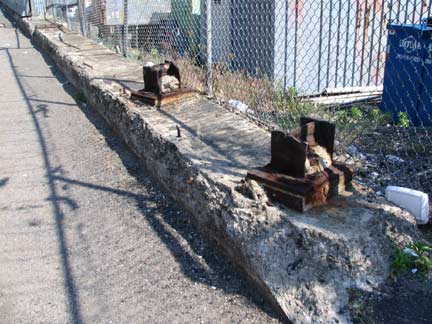
In the top photo we see an enclosed conveyor track crossing Atlantic Avenue that would bring the contents of elevator cars from an elevated LIRR structure into the Armour packing plant. The el structure had ascended from the Vanderbilt Yards running on Atlantic Aveune’s south side.
The remains of two stanchions that supported the conveyor track could be seen on Atlantic Avenue until Atlantic Yards construction began in 2010.
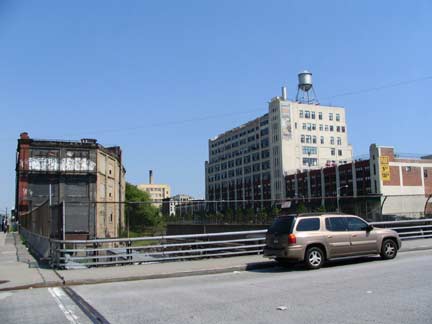
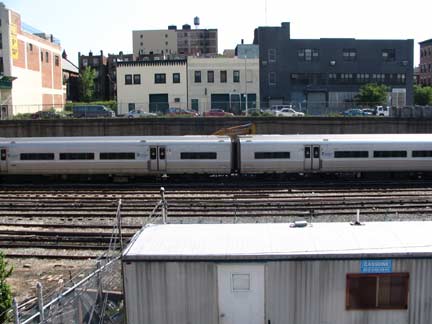
Many of the buidlings in the path of the Atlantic Yards project, like the Underberg, have already been razed before various court challenges to the project have been decided, a ploy many developers use. The yards section shown here will be decked over for a parking lot and other Atlantic Yards buildings.
Projects big and small
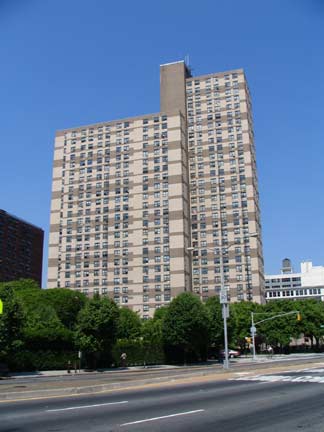
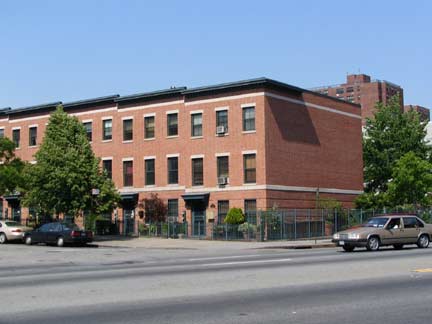
The conventionally Corbusian tower at Adelphi and Atlantic (top) was completed in the mid-1970s while Atlantic Commons, between Fulton St., Atlantic Avenue, and S. Portland and Carlton Avenues, one of the few new projects that made an attempt to match the scale and style of its surroundings, was completed in the 1990s.
Was this the largest painted sign in NYC? It stretches a few hundred feet along a warehouse, actually two buildings, on the SW corner of Atlantic and Underhill Avenues.
In any case, the peculiar ornamentation announces that the building on the right once had a much different use, but what?

These questions are academic now, as the whole shebang had been covered over by Storage Deluxe signage by 2012.
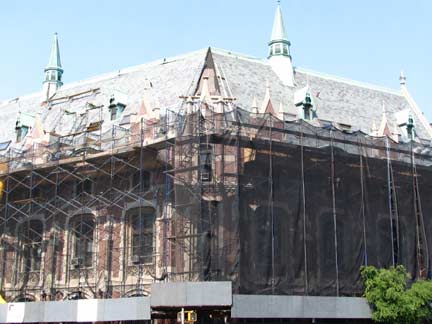
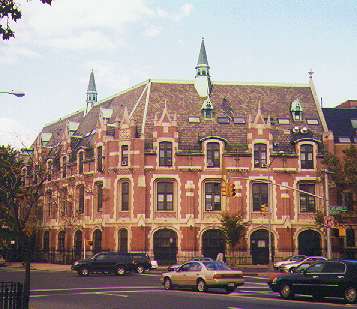
I’m always googling to find out the buzz at Cathedral Condominiums, my old high school at 555 Washington Avenue and Atlantic. The building dates to 1914 and was a preparatory seminary until 1985, when attendance dropped below the Mendoza line. Your webmaster never explored the surrounding area when I attended the place in the Savage Seventies; I was told I’d get knifed or shot. Our newspaper wasn’t called The Spire for nothing.
In 1998 I could have picked up a 2-bedroom here for $198K, but, like Mary Hopkin says, those were the days. As the area has improved, apartments have inflated in price — good news for current owners. It seems to be undergoing a major reno; here’s a shot from a few years ago.
A few years ago, ForgottenFan Linda P., now a tenant in the converted school, sent me some photos of the school the way it looked in the 1920s. By the time I got there in the Super 70s, it hadn’t changed much.
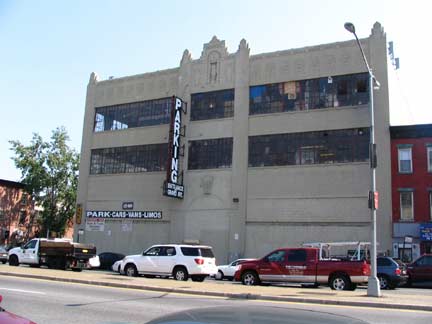
One of the Rules of Architecture states that parking garages have to be butt-ugly. This one on the south side of Atlantic west of Grand was apparently built before the rule came into effect.
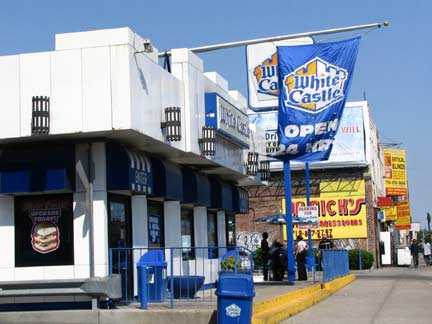
When your webmaster attended HS here I had no idea there was a White Castle was nearby. (We didn’t hit the surrounding neighborhood much, because we wanted to remain alive.) It may be a recent development. Dr. Nick’s Transmissions is more representative of what you’ll find along this stretch of Atlantic. Because of the LIRR running down the middle of the street until 1940, very few retail business or residences ventured here.

LIRR Substation #1, constructed as part of the LIRR electrification between Flatbush Avenue and Rockaway Beach in 1905.
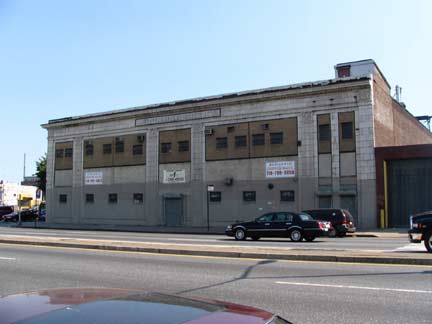
Select Paper and Tablet. As a kid your webmaster would obtain these small drawing tablets that came in 5 colors and would fill them with drawings. Of lampposts.

Sherita the lipsticked dinosaur has presided over the NE corner of Atlantic and Classon Avenues, representing a heating oil concern, for a number of decades now.
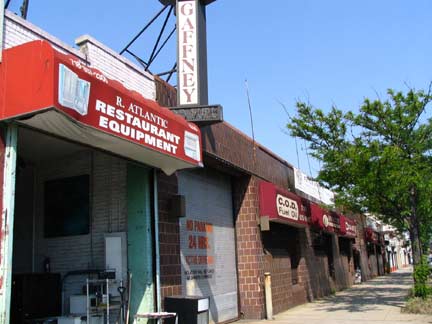
Restaurant supplies and fuel oil, Atlantic Avenue east of Classon.
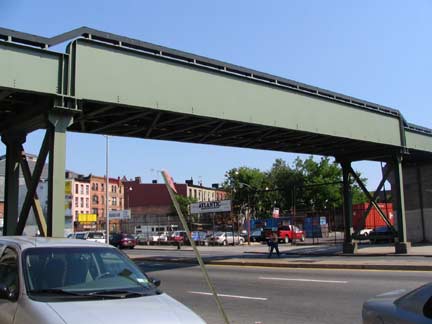
In possibly the only single-track operation in the NYC Subways, the Franklin Shuttle crosses Atlantic Avenue. Long given up to deteriorate, the shuttle was rescued and rehabilitated from 1999-2000.
It was originally built as a surface line in the 1880s as part of the Brooklyn, Flatbush and Coney Island Railway, which desired to connect with the LIRR at Atlantic Avenue. In 1896 the line was connected to the Fulton Street El after the LIRR terminated its agreement.
Your webmaster, by this time, was beginning to droop a bit on an 84-degree day in May, and I had attained my desired destination. But there were still a few items to chronicle.
The 23rd Regiment Armory, 1322 Bedford Avenue, was built from 1891-1895 and takes up most of the block between Atlantic Avenue, Pacific Street and Franklin and Bedford Avenues. The regiment was organized during the Civil War and was housed in a nearby armory on Clermont Avenue from 1873-1895. It may boast Brooklyn’s most prominent corner tower, a 136-foot beauty. Architects Fowler and Hough emphasized uneven sandstone that would create highlighting shadows in the afternoon sun.
The armory, like many in the NYC area, is being used as a homeless residence.
Grant Square
After walking the relatively pedestrian Atlantic Avenue east of Washington, coming upon the Grant Square area, where Rogers Avenue meets its daddy, Bedford Avenue, at Pacific and Dean Streets is a revelation as you find several examples of beautiful late 1800s buildings.
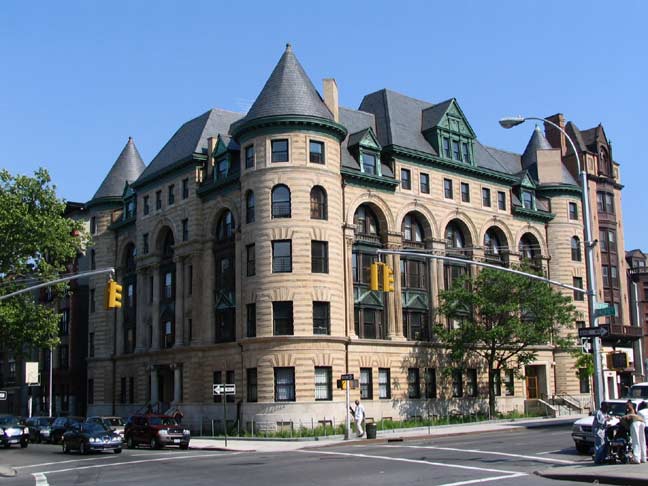
The immense, landmarked Imperial Apartments at 1198 Pacific (above) was constructed in 1892 by architect Montrose W. Morris, who built other magnificent apartment complexes in nearby Bed-Stuy, the Alhambra and Renaissance. When built the apartments were very large indeed but they have since been divided. How many peaks and dormers are there? Victorian architects put everything–including kitchen sinks– in their buildings, but they never look garish or out of proportion.
The Union League Club of Brooklyn, with its Abe Lincoln and Ulysses Grant brownstone portraits, was built in 1889-90 by architect P.J. Lauritzen. It originally housed a private club, much like Park Slope’s famed Montauk Club. As you might expect the Union League was founded by Union supporters in 1863 at the height of the Civil War. Like the Montauk, this building had, at one time, bowling alleys, shooting galleries, billiards room, a gymnasium and a rooftop lounge. It’s now a senior center.
You might think that Grant is modestly turning away from his equestrian statue opposite the club, but the statue came later, in 1896, paid for by club members.
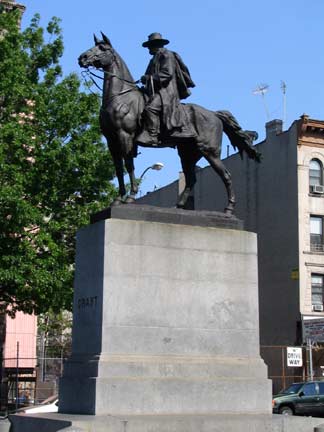
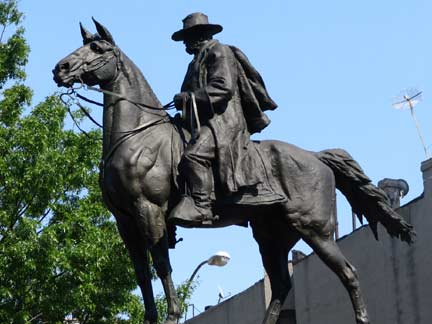
By all accounts Grant was a great general — even after quitting the military after fighting the Mexican War and returning to lead the Union against the South–but his presidency was rocked by scandal. Yet he was very popular in New York City, where the Ohioan was entombed upon his death in 1885. William Ordway Partridge’s 1896 equestrian statue was paid for by the Union League. He also sculpted the Alexander Hamilton portrait that can be found at Hamilton’s residence, Hamilton Grange, in Hamilton Heights, Manhattan, and Samuel Tilden at Riverside drive and West 112th Street.
Sources:
An Architectural Guidebook to Brooklyn, Francis Morrone, Gibbs-Smith 2001
New York’s Historic Armories, an Illustrated History, Nancy L. Todd, SUNY Press 2006
5/27/07

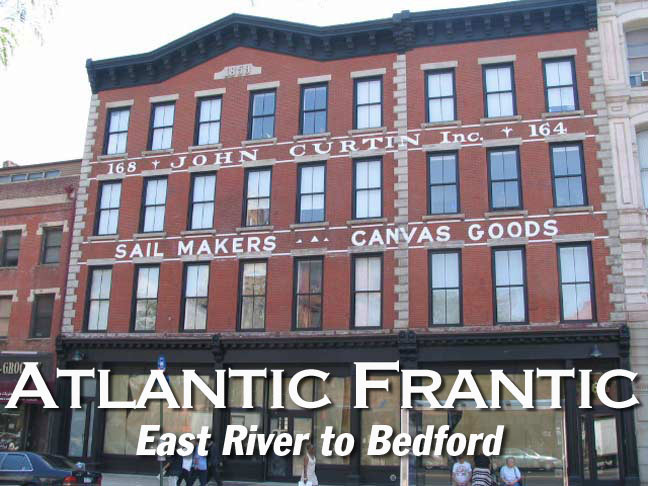
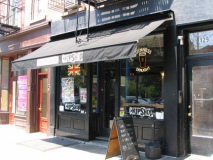
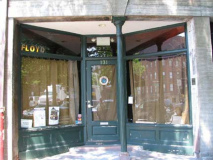
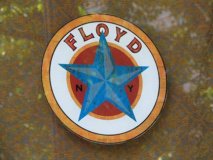
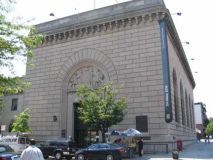

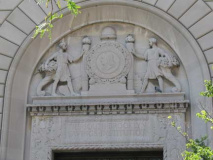

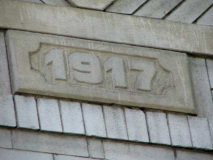

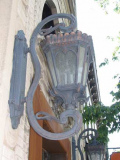
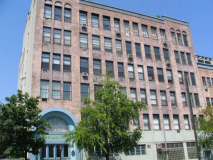


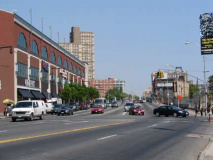

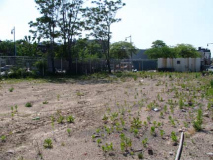
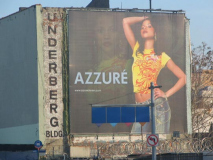
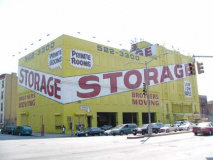
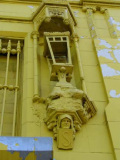
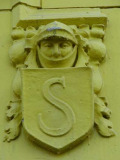


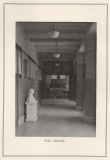
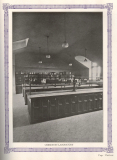
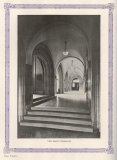
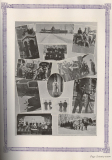
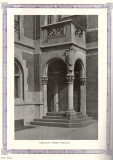
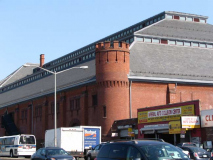
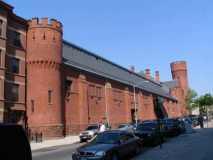
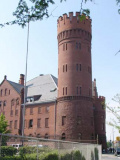



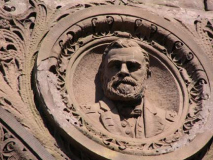
16 comments
Any old photos of Ariolas Pastry on Fulton?
I believe White Castle opened in the !990s. You are right about the !970s,it was rugged to say the least. Even today after urban renewal it has its “moments”.
would love to see the next chapter of atlantic avenue, east of Bedford Avenue. Would also like to know mire about Atlantic avenue’s width (when was it made as wide as it us today. there are a few buildings inside lots between Nostrant and Kingston that look like they once belonged to another street.
Would like to see more of Atlantic avenue, East of Bedford Avenue. Would also like to know more about Atlantic Avenue’s width (when was it made as wide as it is today?) There are a few buildings inside lots between Nostrand and Kingston that look like they once belonged to another street.
Hello,
I do recall downtown Brooklyn in late 1960’s and early 70’s.It was in a state of decline just like the rest of NYC.
I did see a photo of what I recall was the Times Plaza Hotel, on Atlantic Avenue close to Nevins Street. They had a small cafeteria next to it and I would get my breakfast some days.
The hotel , in 1972 was taking in patients from NYS psychiatric Hospitals like South Beach, Kingsboro, and NYC ‘s Kings County and others. However I would see many walking around aimlessly, and not showering. little supervision . I guess the state just wanted them out of the hospitals, much cheaper. Also hard drugs like heroin and cocaine took over the area, and destroyed many lives.
NYS began a methadone program on Waverly Ave and Fulton street. Also A &S Mays, McCorys, all close down. I think the paramount was on Flatbush and Fox, shows Murray the K, Cousin Bruce and others.
yes, many rock and roll shows in Downtown Brooklyn. Little Anthony and Imperials came from Brooklyn,
This website online is known as a walk-through for all of the information you wished about this and didn’t know who to ask. Glimpse right here, and also you’ll undoubtedly discover it.
I am looking for any information (clothing) 1971-1973 of factories Atlantic Avenue as well as 147 Robling St., Brooklyn, NY. i.e, built, maintained by what manufacturer, closed (when). I know this is a long-shot, but researching for this information. Thank you in advance.
Anyone remember a George’s Bar located around the corner Atlantic and Flatbush or Atlantic and Fort Greene?
How about ‘The Four Roses’ bar ?
I do
Anyone remember Nostrand Ave. between Fulton and Atlantic in the 60s and 70s? I was just a little kid an witnessed a riot there in I believe ’68. I never knew why and assumed it was the day Dr. King was shot.
Nostrand had a dentist, Dr. Lesser, an eye doctor, Dr. Freed and a Jewish deli back then. The deli was run by a gentleman that had the numbers tattoo on his arm from being a prisoner in the nazi concentration camp. The dentist, Dr. Lesser was at 517 Nostrand and on Google I see it’s now a fenced vacant lot. What happened to the building? There used to be a store under the dentist’s office and apartments above. I also remember Mrs. Maxwell’s which was on Atlantic Ave. It was a rough area back in the day but I miss certain aspects of it.
I would love to know what 1902 Atlantic Avenue looked like when my great grandfather had his beer brewery there…
What happened to George who always hung out by St Clairs Restaurant on Alantic Ave
Brooklyn was a nice place to grow up in, many challengers. I lived at 348 Atlantic Ave from 1943 to 1958, then parents moved to Bayridge. Anyone remember Nedicks at 4th av & Atlantic av? Miss those days…Cheers!
any one know about the big old kids home back in the 50,, 60, high walls,1000 atlantic ave maybe